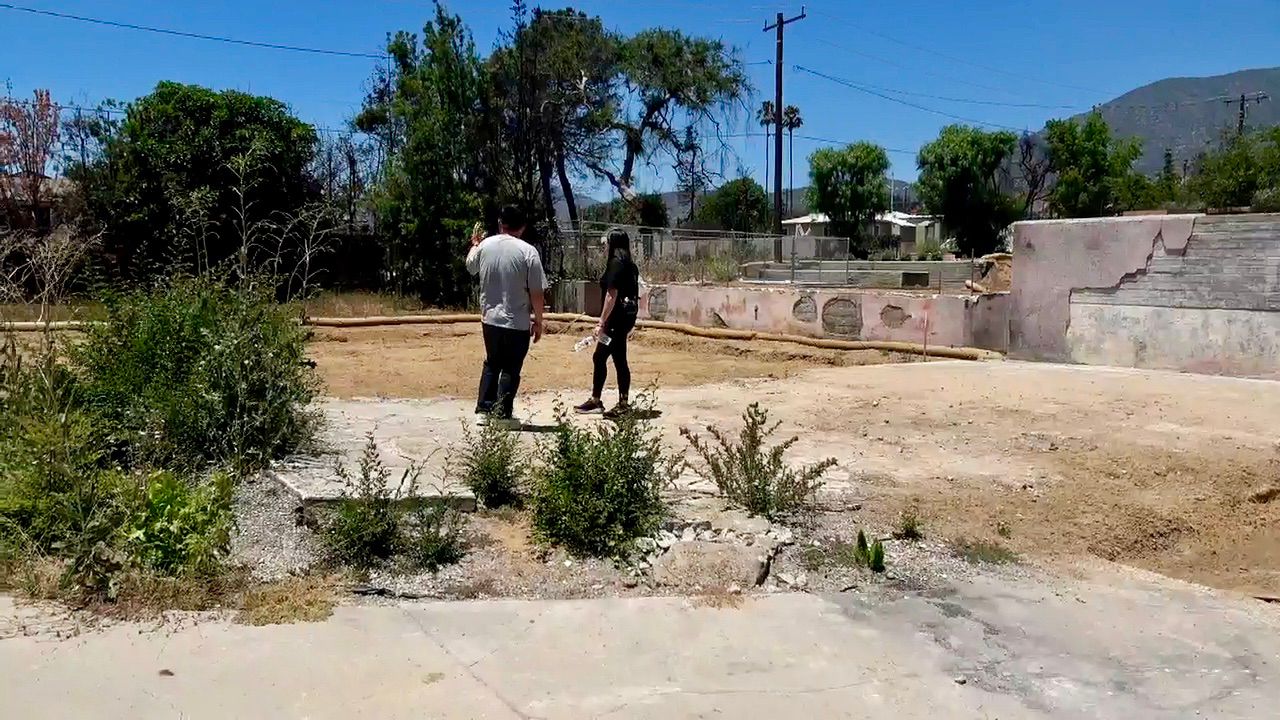LOS ANGELES — During the 1940s, when Jim Kepner couldn’t find any information about homosexuality on library shelves, he amassed his own significant collection.
Those materials eventually became part of the basis of what is the ONE Archives at USC Libraries which director Joseph Hawkins proudly explains is “the largest LGBTQ repository in the world.”
The shelves include books, magazines and other materials — some 8,000 titles in over 45 languages — plus boxes and boxes of personal letters and photographs.
What You Need To Know
- The ONE Archives at USC Libraries is described as the largest LGBTQ+ repository in the world, attracting researchers from all over the world
- The shelves include books, magazines and other materials — some 8000 titles in over 45 languages — plus boxes of personal letters and photographs
- The Getty Research Institute has a collection of LGBTQ+ related materials in an exhibit called "$3 Bill: Evidence of Queer Lives"
- “It’s about the fact that Queer people and Queer artists have always been around, have always created art, and have always contributed to our public discourse,” curator Pietro Rigolo explained
And while it’s part of the USC system, researchers come from all over the world because it’s vital, Hawkins said, that the material in the archives be available to the public. This wasn’t always the case with queer writing.
“Until the 1990s, actually, queer history was something that was actually pretty much forbidden,” Hawkins explained.
Most libraries, he said, kept these materials locked in a cabinet, inaccessible to visitors.
“In order for a young person to go in and find information on queer lives or homosexuality, they would actually have to get permission from the librarian and they would open it with a key,” Hawkins said. “They could have their name put down on a piece of paper so they would be at risk of investigation, incarceration, that sort of thing.”
Decades later, communities are once again debating over the presence of LGBTQ+ materials on library shelves. And this year has seen several attempts to remove information from other public settings.

For instance, references to transgender individuals were removed from the website for the Stonewall National Monument — the site of the Stonewall Uprising in 1969. Even the T from LGBT is gone, with the site now reading “the events at the Stonewall Inn sparked fresh momentum for the LGB civil rights movement!”
Earlier this month, Defense Secretary Pete Hegseth ordered the Navy to rename the USNS Harvey Milk, which would remove the name of the assassinated gay rights activist who served in the navy.
“Well, in a word, it’s erasure,” Hawkins said. “I mean, there’s a big movement now to eradicate histories that are not a part of mainstream white culture. And so, as a result of that, people are actually reaching out to take collections like this off the map.”
The Getty Research Institute has a collection of LGBTQ related materials as well in an exhibit called “$3 Bill: Evidence of Queer Lives,” on display through Sept. 28.
Curator Pietro Rigolo said the pieces include contemporary works as well as photographs of mid-century drag balls and a book from Berlin published in 1900, all of which tell an important story.
“It’s about the fact that queer people and queer artists have always been around, have always created art, and have always contributed to our public discourse,” he explained.
Rigolo said the Getty Research Institute didn’t set out to create a queer collection, but over time, as he realized the scope of what they had, he set out to expand upon it.
The exhibit is the culmination of that effort, and while he recently left the institute to take a job in Italy, he was glad to see this exhibit through, especially now, he said, when sections on gender identity and political protest, as well selections from the AIDS Chronicles, feel so urgent.
“I’ve been working on the project for a couple of years, and I would never have expected that it would be so timely and so political,” Rigolo said. “I always hoped it was it was going to be a timely project, but I could have never envisioned the fact that now many, many rights are again negotiated…and taken away from us.”
Meanwhile, after nearly three decades at One Archives, Hawkins is retiring as director. His time here may be coming to an end, but the work of the archives is far from over.
“For years we’ve been fighting erasure. We’ve been fighting the idea that people sort of, like, make it okay to be bad to gay people,” he said. “We’ve always been here, we’ve always been Queer, we’ve always done what we do, and this place is a place where you can go and do historical research on that and also to give yourself a sense a place.”
A place to connect to the past, understand it, and preserve it.











